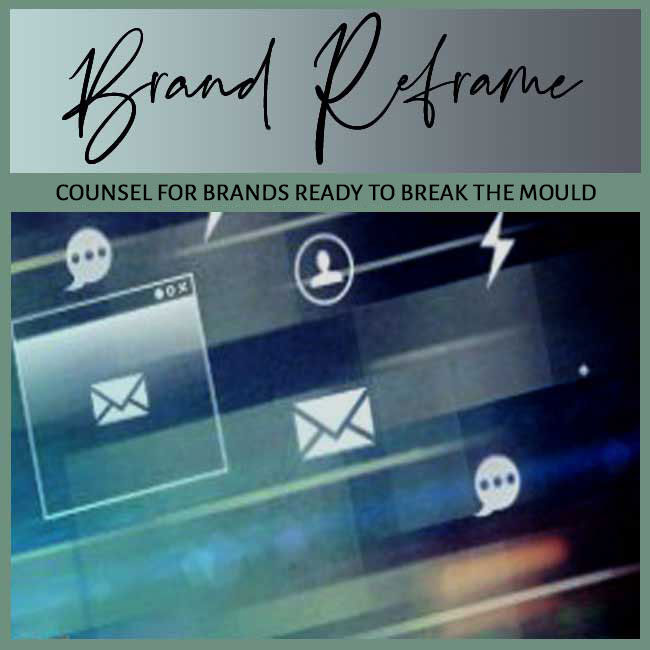
BY: SHOBHA PONNAPPA | BRAND BREAKTHROUGH STRATEGIST | 45 YEARS | 125+ CLIENTS
Brand messaging is the way your brand communicates its value, personality, and promise to your audience across all touchpoints. It is the thread that ties together your mission, positioning, tone of voice, and value propositions into a single, consistent narrative. Good messaging is not just what you say, but how you say it … the choice of words, the rhythm, and the emotional undercurrents that make your brand memorable. When brand messaging is strong, it creates instant recognition and connection, even in competitive or crowded markets.
A clear brand message doesn’t simply list features or services … it makes your audience feel something about your brand. It shapes perceptions, influences decisions, and sets expectations for every interaction. The right messaging builds familiarity and trust, while poor messaging creates confusion or indifference. Ultimately, your brand message is your most scalable asset … once defined, it works for you across every channel, campaign, and conversation without needing to be reinvented each time.
In the media environment we have today, audiences are bombarded with thousands of marketing messages every day. Without a sharp, distinctive brand message, your voice is drowned out in the noise. Clear messaging acts as a signal … it cuts through distractions, gives people a reason to notice you, and makes them care enough to stay engaged. In markets where products and services are increasingly commoditised, messaging is often the single biggest differentiator.
For brands that want lasting growth, messaging also plays a critical internal role. It aligns teams around a shared way of talking about the brand, which strengthens execution across marketing, sales, customer service, and leadership. Without a unified message, different parts of the business start telling different stories, creating brand fragmentation. A consistent, resonant message keeps both your team and your audience on the same page … literally and figuratively.
Clarity is the cornerstone of effective brand messaging. It means that your audience should be able to understand exactly who you are, what you offer, and why it matters … without needing to read between the lines. Ambiguity or jargon only slows down comprehension and creates friction in decision-making. Clear messaging doesn’t mean simplistic; it means deliberate, precise, and audience-friendly.
Brands with clarity make it easy for people to retell their message accurately. This helps word-of-mouth spread without distortion and ensures every interaction reinforces the right story. Clarity also builds trust because audiences feel respected when information is direct and understandable. In competitive industries, a clear message is often more persuasive than a clever but confusing one.
Consistency ensures that your message is delivered the same way across all channels and contexts. Whether it’s your website, social media, press coverage, or sales conversations, the tone, vocabulary, and key points should stay aligned. This repetition builds familiarity and brand recall … people begin to remember you not just for what you say, but how you say it.
When brands fail at consistency, they risk looking unreliable or fragmented. Audiences may struggle to connect the dots between different experiences with the brand, reducing loyalty. A consistent message is not about repeating identical words, but about maintaining the same essence and emotional tone, no matter the platform or format.
Relevance ensures your messaging reflects the needs, interests, and context of your target audience. A relevant message shows that you understand their challenges, values, and aspirations right now, not five years ago. This means continually scanning the market, listening to customers, and adapting your message without losing your core identity.
When relevance is missing, audiences tune out because they don’t see themselves reflected in your message. They may even switch to competitors who appear more in tune with their reality. Strong brand messaging strikes a balance between timeless brand truths and timely connections to the current cultural, economic, or industry landscape.
Emotional resonance is what makes a brand message stick in memory and influence behaviour. People don’t just process messages logically … they remember how a brand made them feel. Storytelling, vivid imagery, and empathetic language can evoke emotions that create a deeper bond between your brand and its audience.
Brands that master emotional resonance don’t rely on manipulation … they connect authentically with values and aspirations that genuinely matter to their audience. This kind of connection inspires action, loyalty, and advocacy far beyond a single transaction. When done well, emotional resonance transforms messaging from informative to unforgettable.
Start by deeply understanding your audience’s worldview … their pain points, dreams, language, and decision-making triggers. Use customer interviews, market research, and social listening to uncover the words and themes that resonate most with them. Once you have this insight, craft a core brand message that captures the essence of your value in one concise, compelling statement. This message should act as your “north star” for all other communication.
Next, create a messaging framework that breaks down your main value proposition into supporting pillars, proof points, and tone guidelines. This ensures that as your brand grows, every team member and partner can represent your brand accurately and persuasively. By starting with both a strong core message and a practical framework, you give your brand a consistent voice from day one.
Sustaining strong messaging requires continuous review and refinement. Schedule regular brand audits to ensure your message still reflects your positioning, market conditions, and audience expectations. Even a well-crafted message can lose its impact if it feels outdated or disconnected from reality.
It’s also important to train new team members and partners in your brand messaging framework so that consistency doesn’t slip as your organisation scales. When updates are needed, roll them out across all channels simultaneously to avoid creating a patchwork of old and new messages in circulation. This keeps your brand’s voice coherent and authoritative.
One of the most common pitfalls is trying to please everyone with a single message. This often results in watered-down statements that lack distinctiveness and fail to connect strongly with any specific audience. Instead of casting a wide net with generic claims, focus on speaking directly to your ideal audience … even if it means others won’t relate as strongly.
Another pitfall is overcomplicating your message with excessive detail or technical language. While you may want to show depth and expertise, overwhelming your audience with too much at once can dilute your core point. The best messaging is layered: it starts with a simple, engaging hook, and then invites people to explore deeper details as their interest grows.
A boutique skincare company was struggling with vague and interchangeable messaging that sounded like every other wellness brand. Through customer interviews, they discovered their audience valued simple, daily self-care moments rather than aspirational luxury. I reframed their messaging around “the small luxuries of your everyday” and infused that theme into all touchpoints. Sales rose steadily, and the brand developed a loyal following that felt personally seen in its communications.
A growing IT consultancy was leading with a long list of technical capabilities, overwhelming prospects with jargon. By focusing instead on the future state their solutions created for clients, I helped them transform their messaging from “what we do” to “what you can achieve.” This narrative shift not only simplified their pitch but also positioned them as strategic partners rather than service vendors. Within a year, their average deal size had increased significantly.
A non-profit working on clean water access had a powerful mission but expressed it in overly technical terms that failed to inspire action. They worked on distilling their message, with my help, into a relatable, urgent narrative … “Every drop counts, and so does every person.” The shift mobilised grassroots support and inspired more recurring donors. Their campaigns began to generate more shares and community engagement than ever before.
An e-learning company allowed each instructor to market their courses in their own way, which led to wildly inconsistent messaging. The leadership, taking my advice, developed a unified brand messaging framework and trained every educator to align their promotions with the platform’s shared values and learner outcomes. Within months, course completion rates improved as learners felt they were part of a coherent, trusted learning environment. Retention rates also saw a measurable boost.
A regional restaurant chain was leaning heavily on discounts to attract diners, eroding margins. When I discovered customers loved the story of the founder’s grandmother’s recipes, I ensured they rebuilt their messaging around heritage, authenticity, and the joy of shared meals. This repositioning allowed them to reduce discounting, charge slightly higher prices, and still grow their loyal customer base. Their social media following more than doubled within six months.
A mid-sized industrial manufacturer used generic product descriptions and broad claims that failed to stand out at trade shows. After researching their buyers’ specific concerns, I reworked their messaging to address the exact problems engineers faced daily … with industry-specific language and proof points. This created instant rapport and credibility, leading to a noticeable rise in inbound inquiries and stronger conversion rates.
Brand positioning defines where you stand in the market relative to competitors, while brand messaging communicates that position to your audience. Positioning is the strategy; messaging is the execution of that strategy in words, tone, and stories. You need both working together to create a brand that feels distinct and credible. Without clear messaging, even the best positioning will remain invisible.
Yes … strong brand messaging should be adaptable while staying rooted in your brand’s core truths. Markets shift, audience priorities change, and language trends evolve, so periodic refinements are essential. The key is to maintain your underlying values and brand promise while refreshing how you express them. This balance allows your brand to remain relevant without feeling inconsistent.
Storytelling transforms brand messaging from a set of claims into a relatable, memorable narrative. Facts and features appeal to logic, but stories tap into emotion and imagination, making your brand more human. When done well, storytelling gives context to your value proposition and helps audiences see themselves in your brand’s journey. This emotional connection can significantly increase loyalty and advocacy.
To resonate across cultures, you must focus on universal human values while being mindful of local nuances. Conduct audience research in each market to identify cultural preferences, sensitivities, and communication styles. Then, adapt your language, examples, and imagery without altering the core essence of your message. This approach ensures global coherence with local relevance.
While your core message should remain consistent, it’s wise to tailor supporting messages for different audience segments. This allows you to address the unique needs, pain points, and aspirations of each group without fragmenting your brand identity. Segment-specific messaging works best when it feels like a personalised chapter of the same overall brand story. This way, each audience recognises themselves without losing sight of your brand’s bigger picture.
You can measure messaging effectiveness by tracking both qualitative and quantitative indicators. Look for higher engagement rates, increased recall in brand surveys, and improved conversion metrics. Pay attention to whether customers repeat your key messages back to you … a sign that your communication is landing. Continually testing and refining ensures your messaging stays impactful over time.
Explore Brand Messaging Disconnect … Real Cases & Fixes
Case Studies
FAQ Insights

"One BIG IDEA can turn brand stagnation into unstoppable movement. Spots are limited each week ... book your breakthrough session now."
Shobha Ponnappa
My Definitive Guides to Other Critical Branding Concepts
Smart insights, real-world frameworks, and idea-driven clarity – designed to help brands move.
Get my fortnightly Brand Reframe newsletter. Smart insights, distilled thinking, and focused momentum to help your brand lead.

Get my free AI strategy guide. Smart prompts, sharper briefs, and practical ways to make AI support your brand momentum.

Just fill in the form to join. Get my newsletter and the guide shown alongside, all with several game-changing tips.